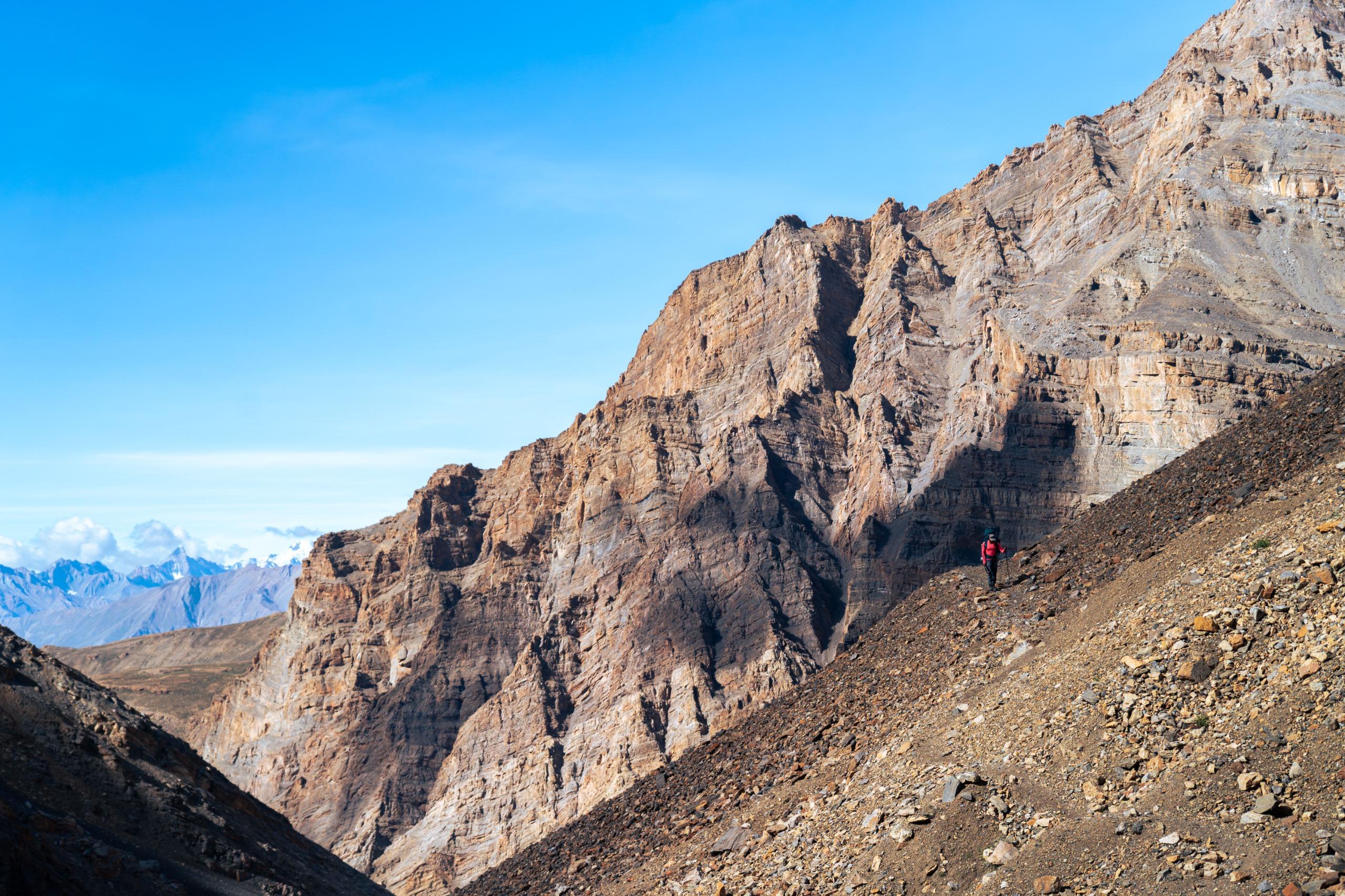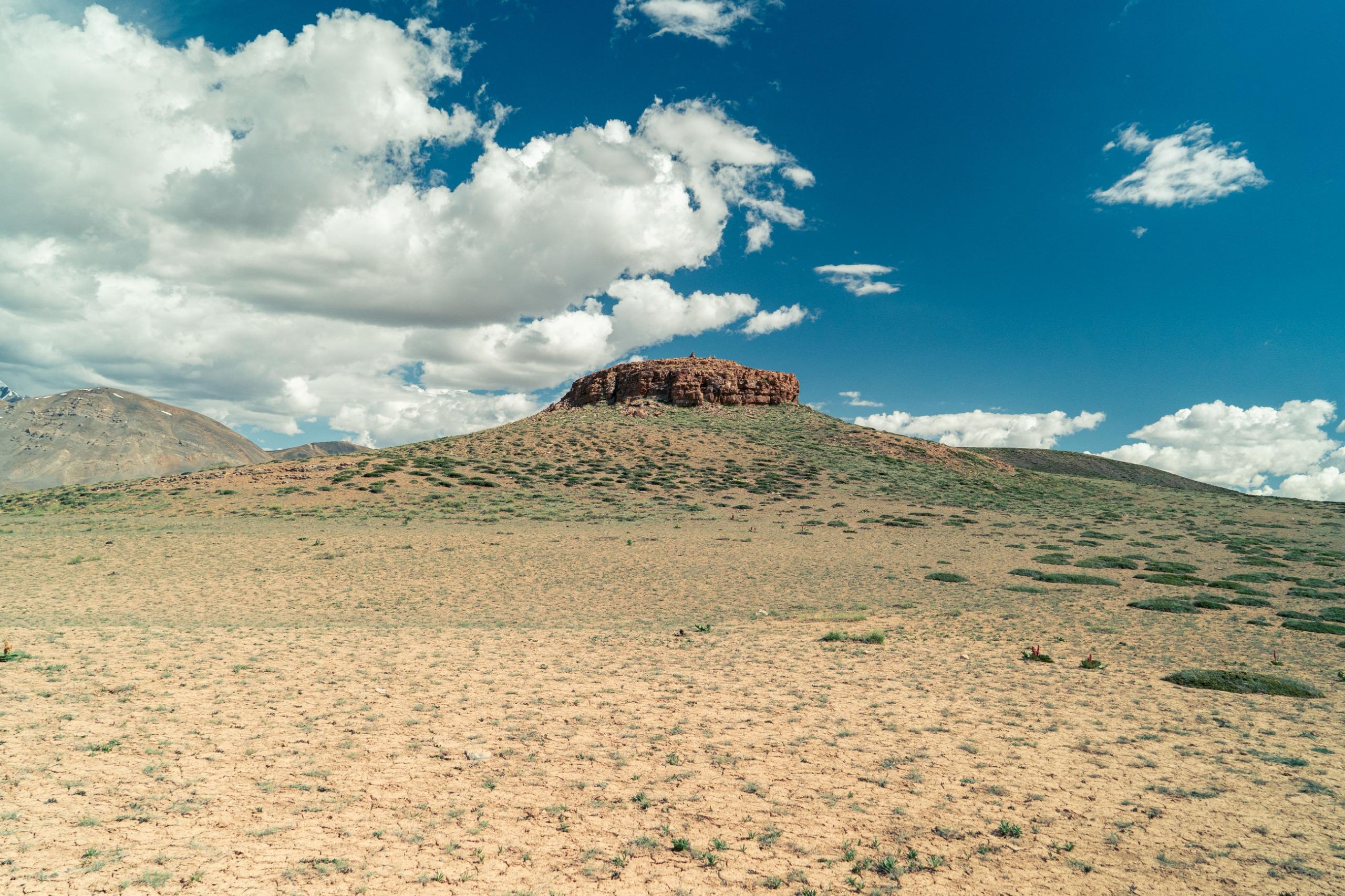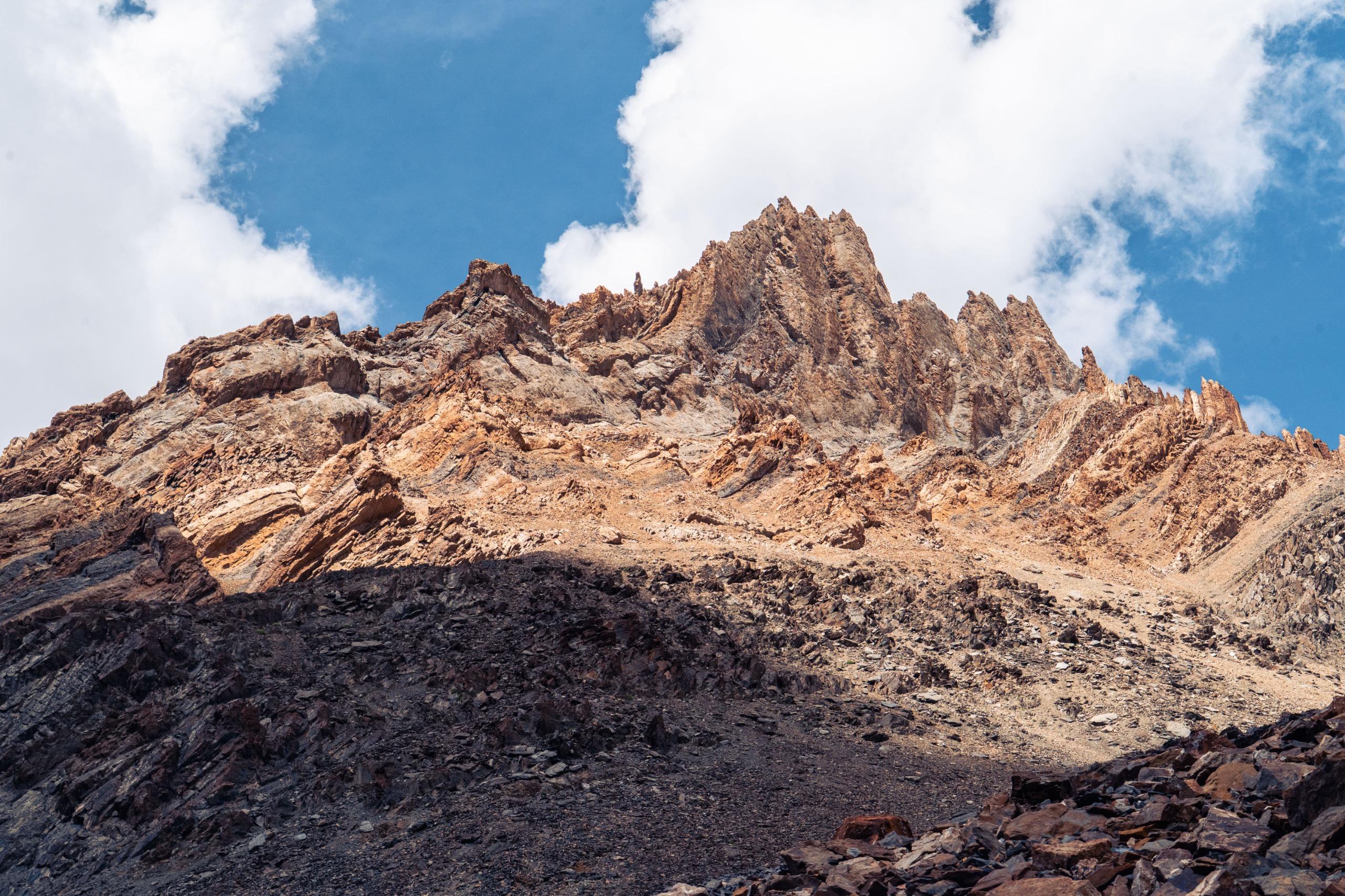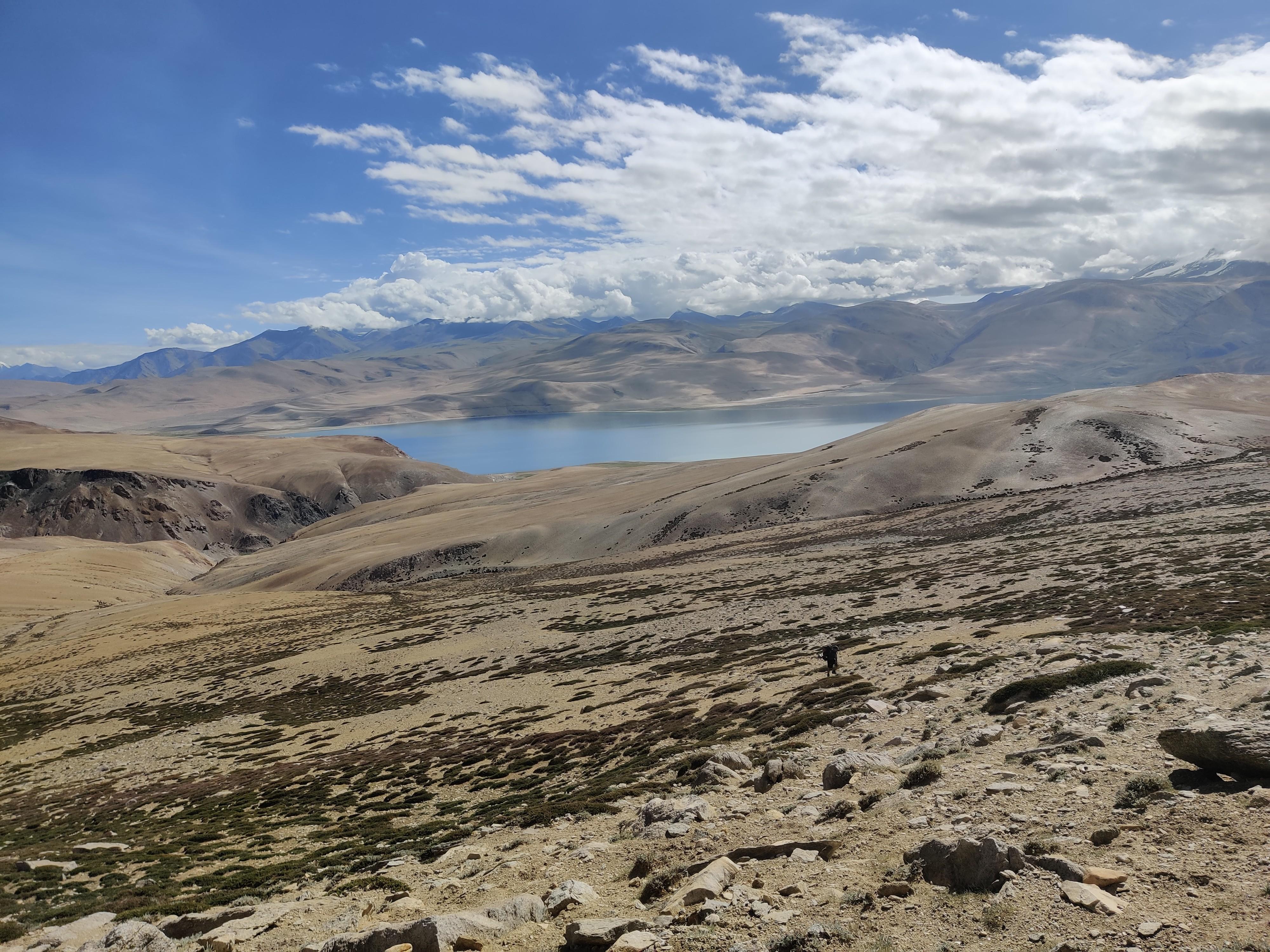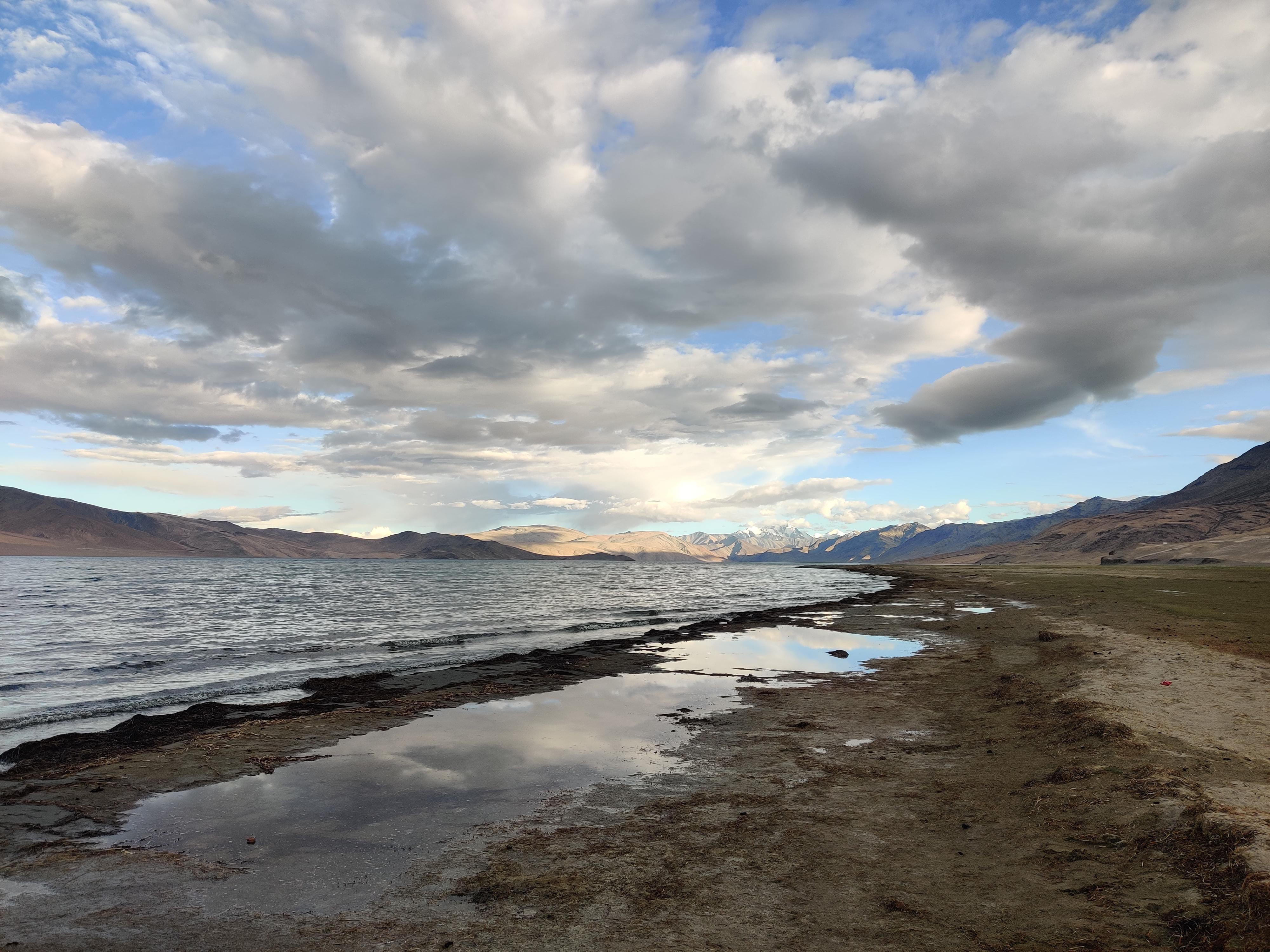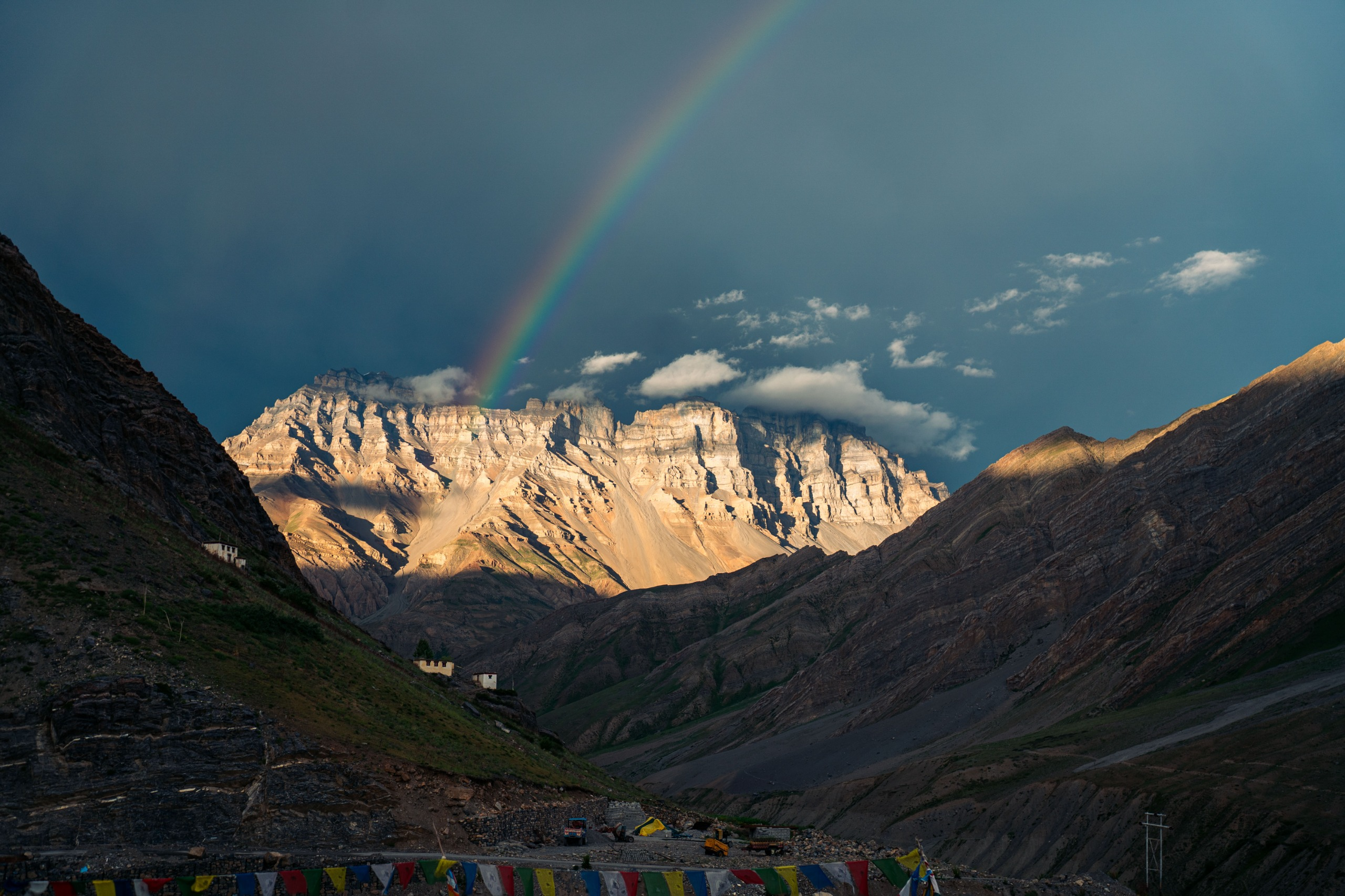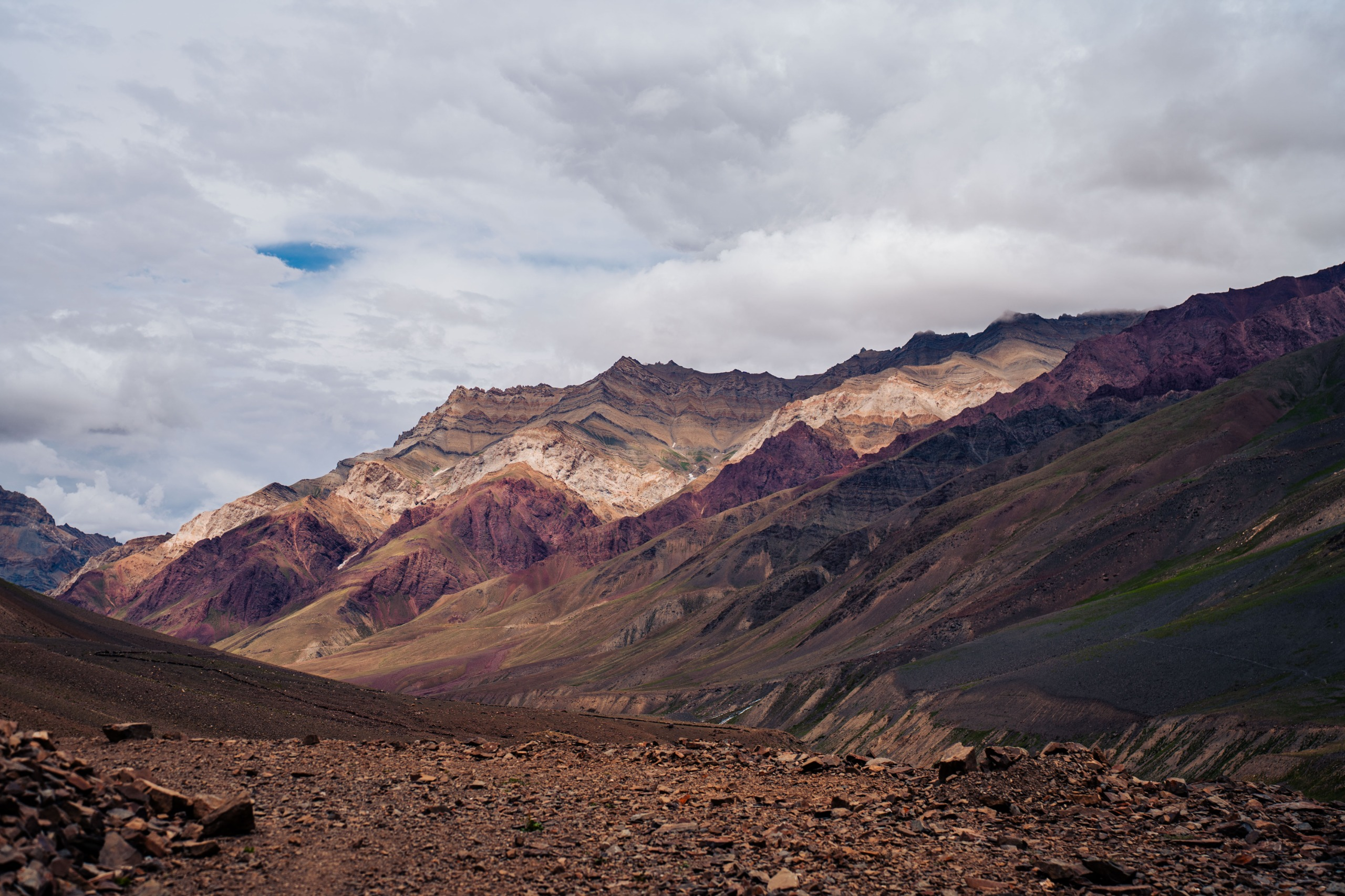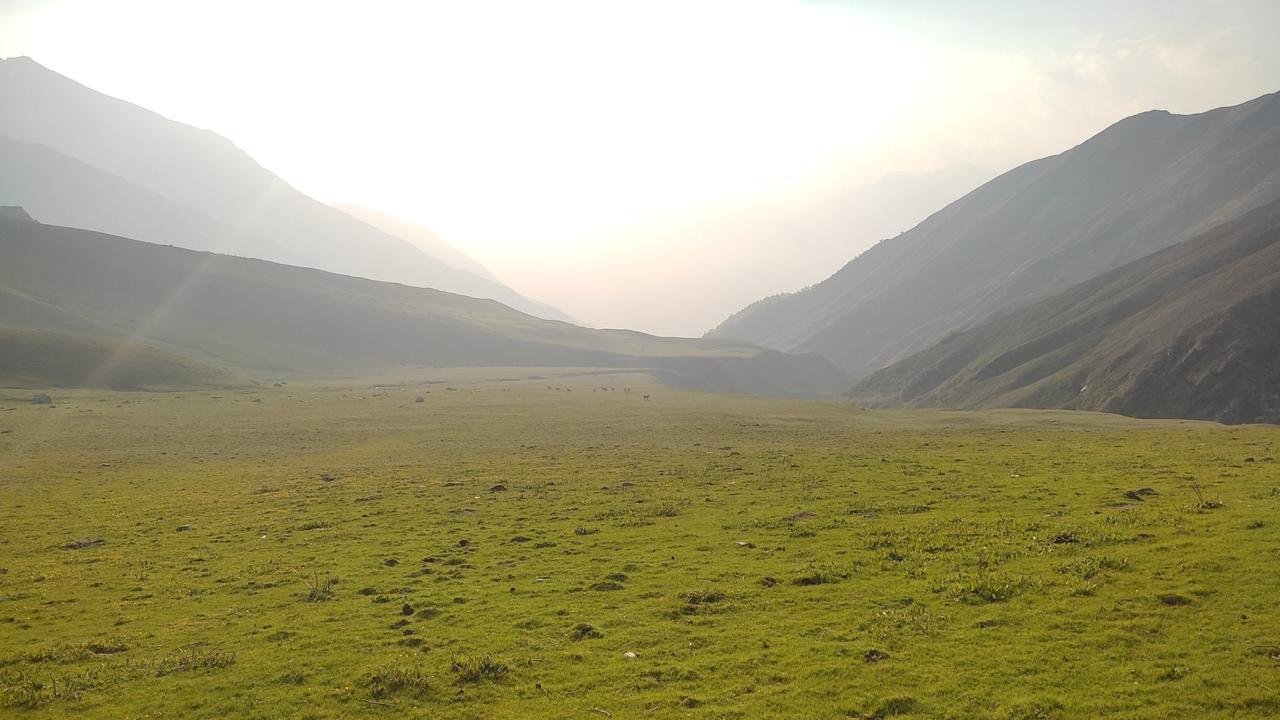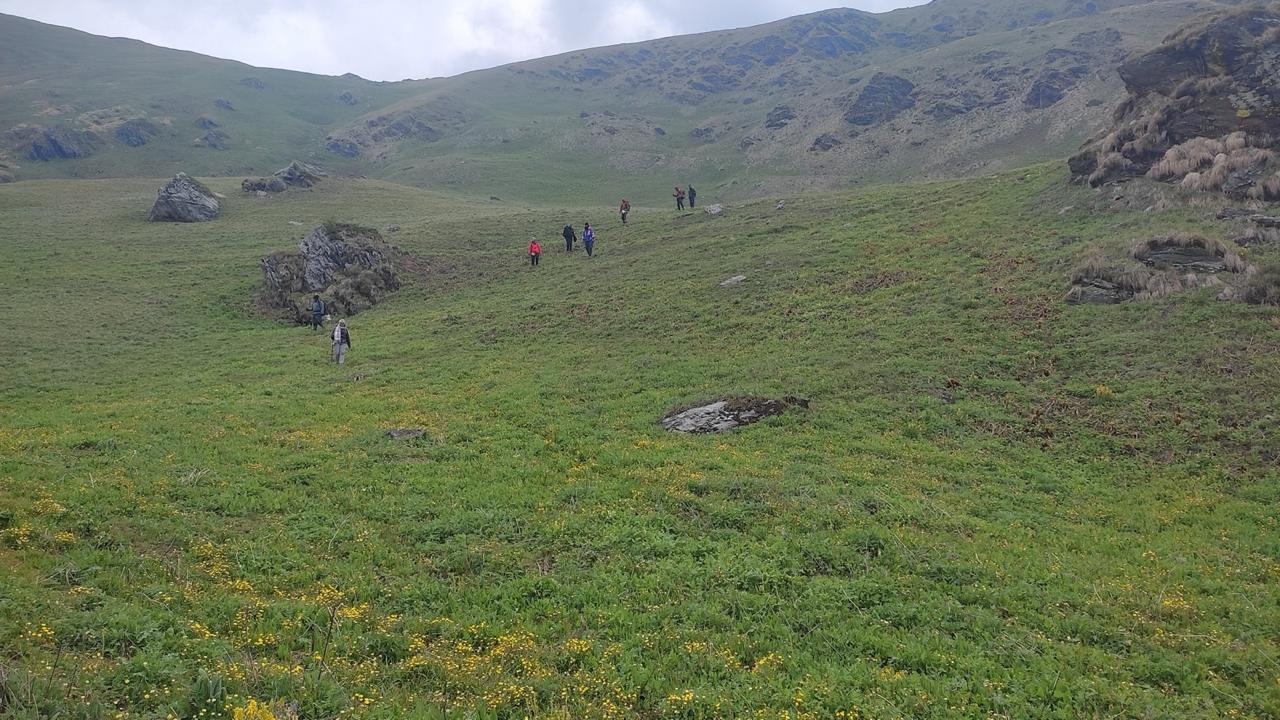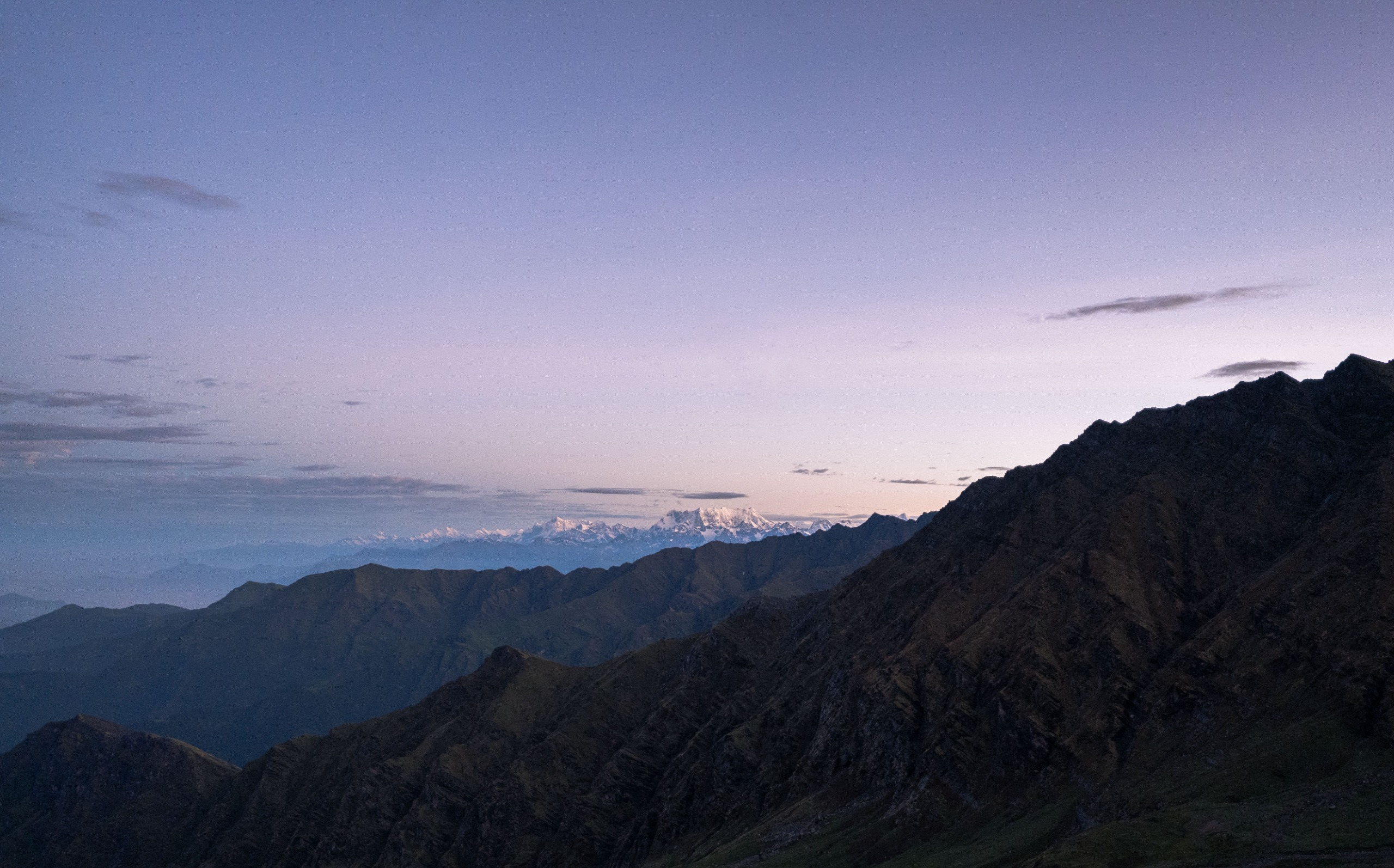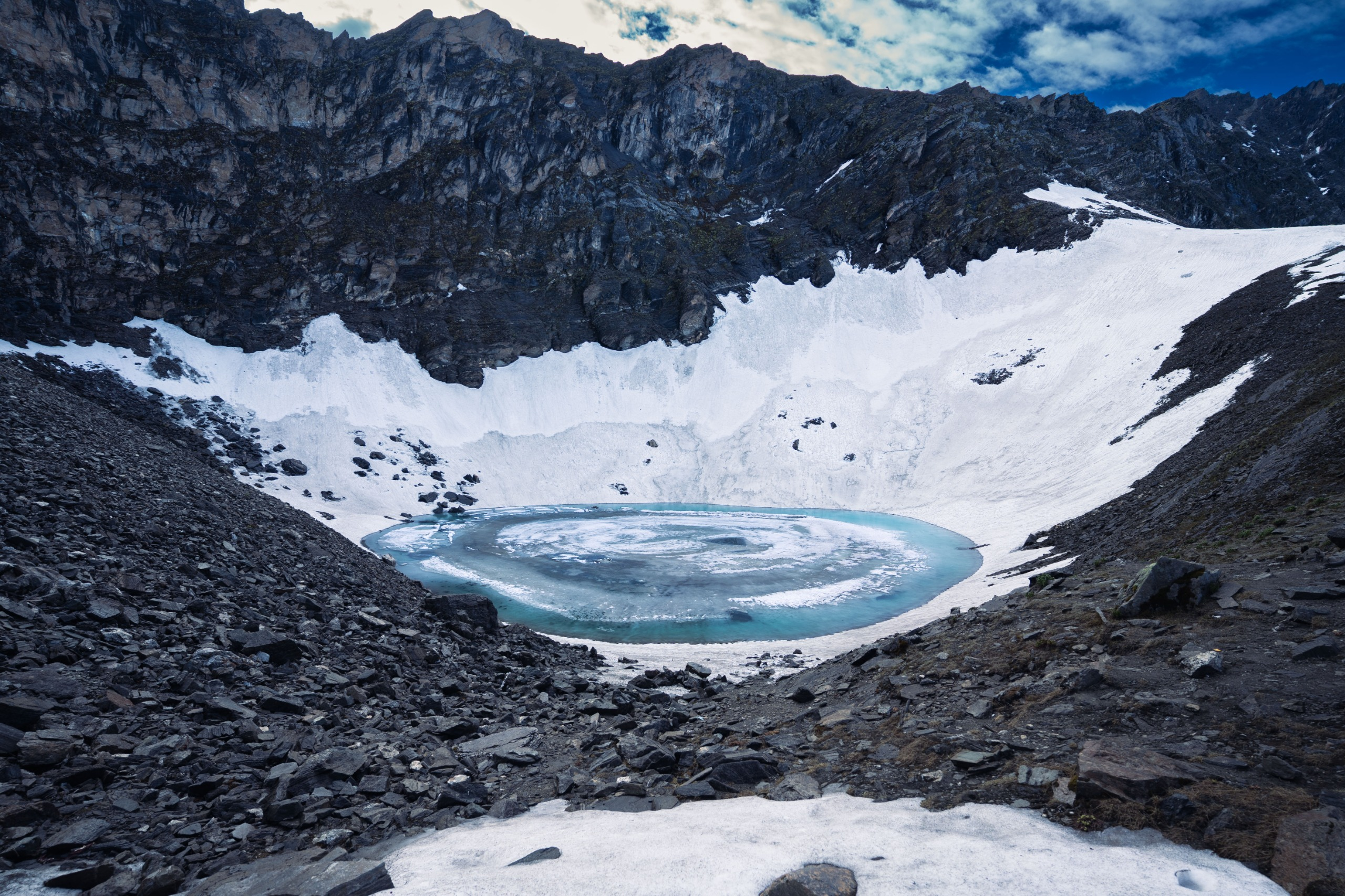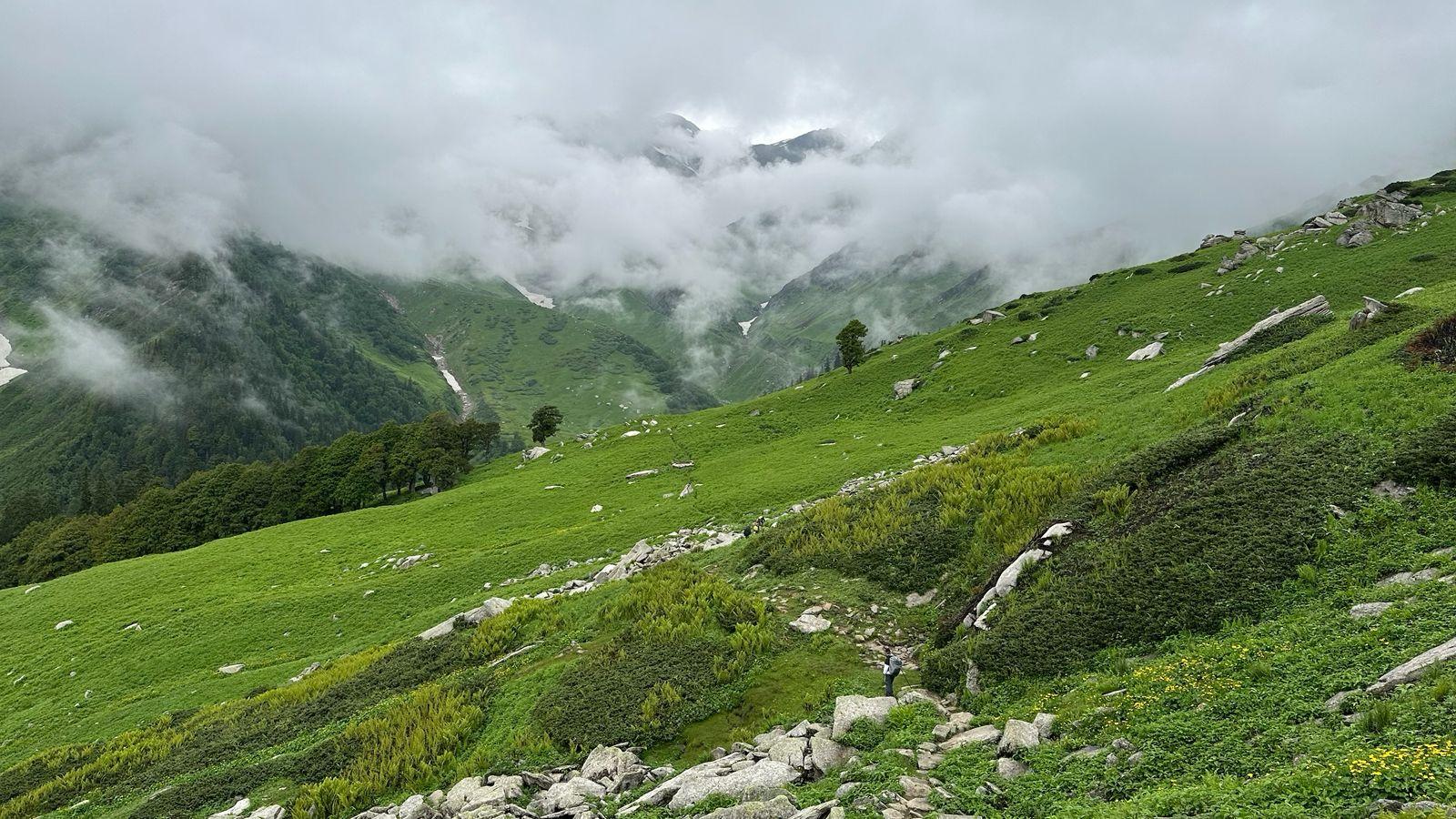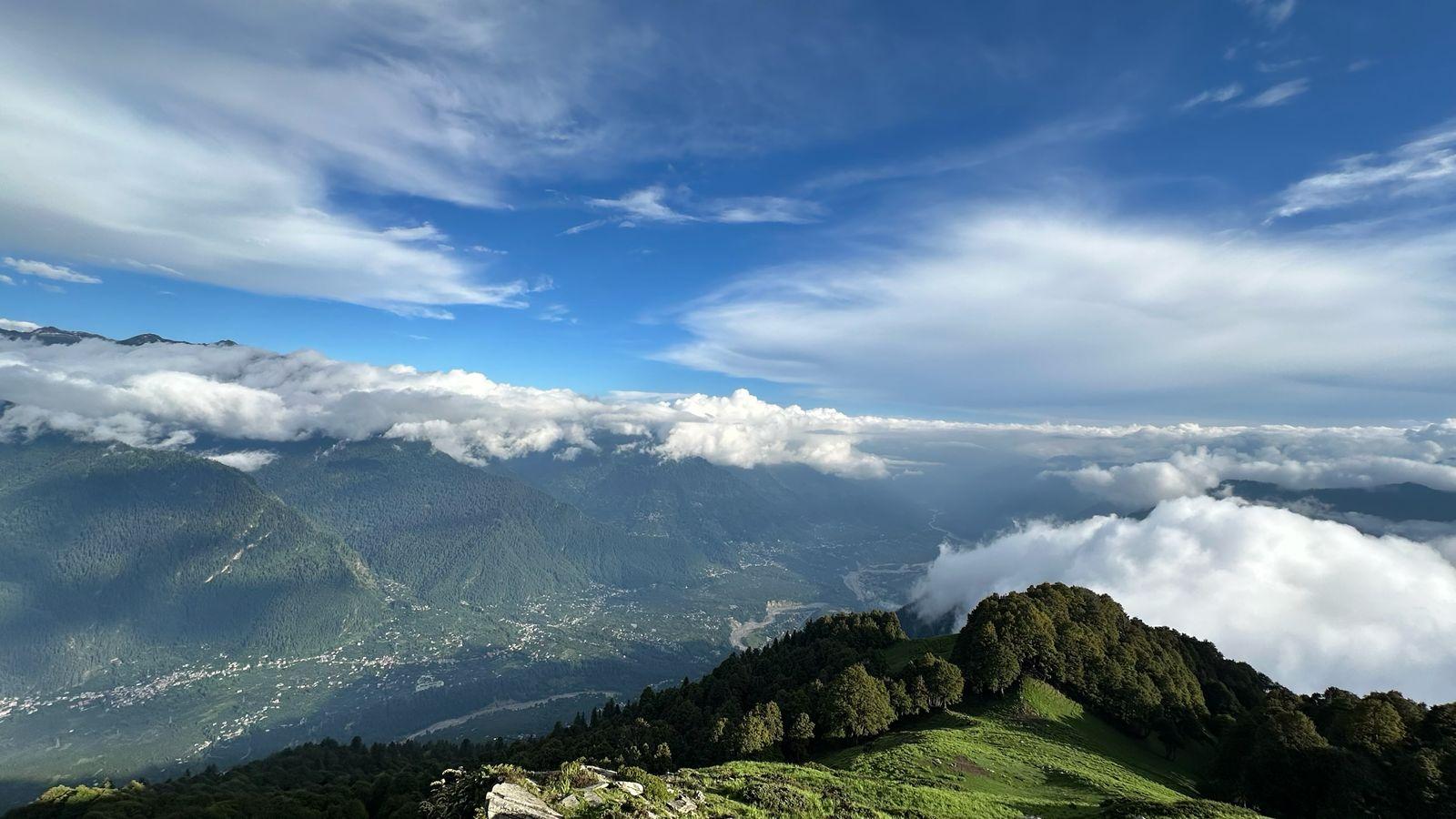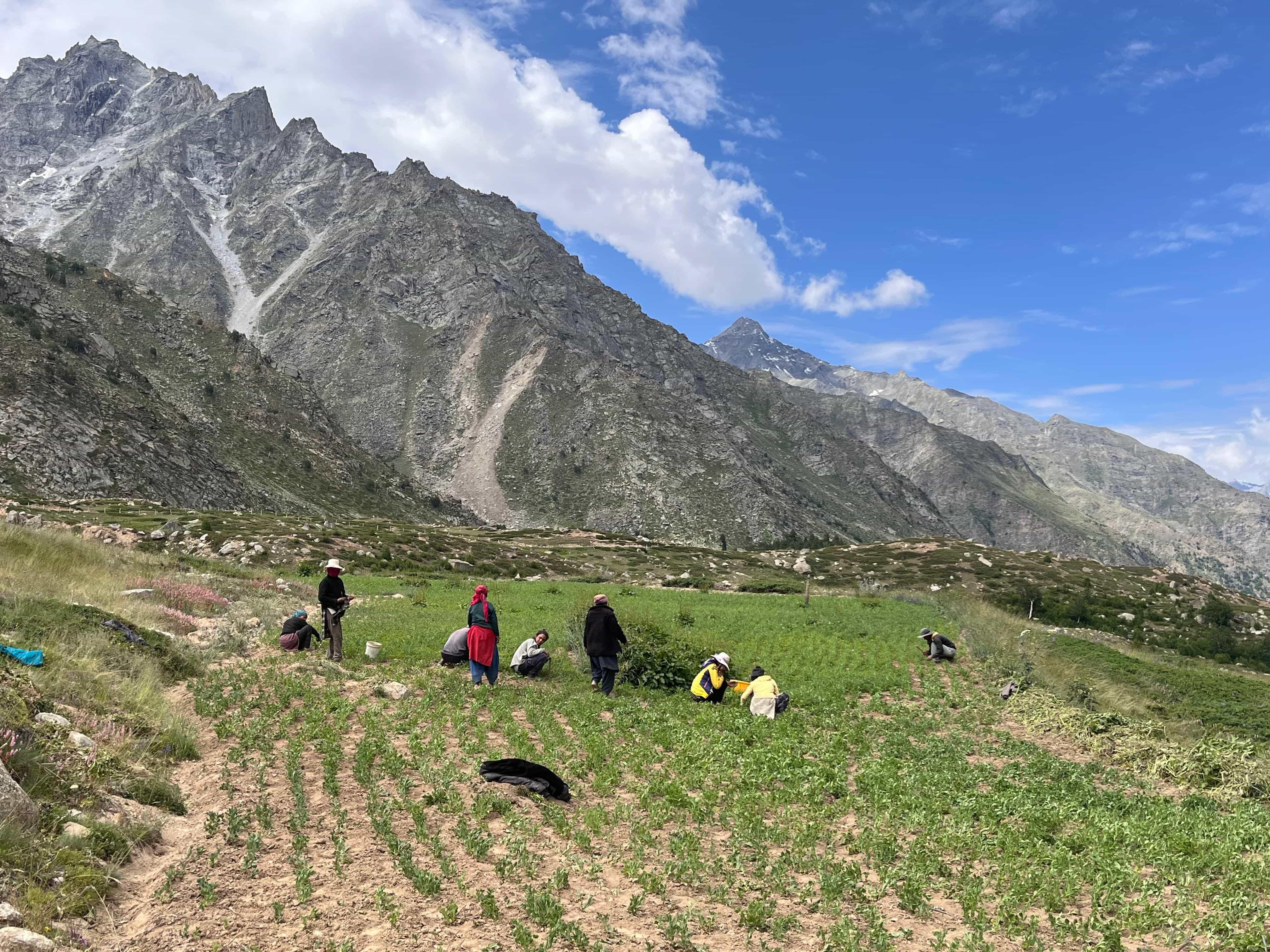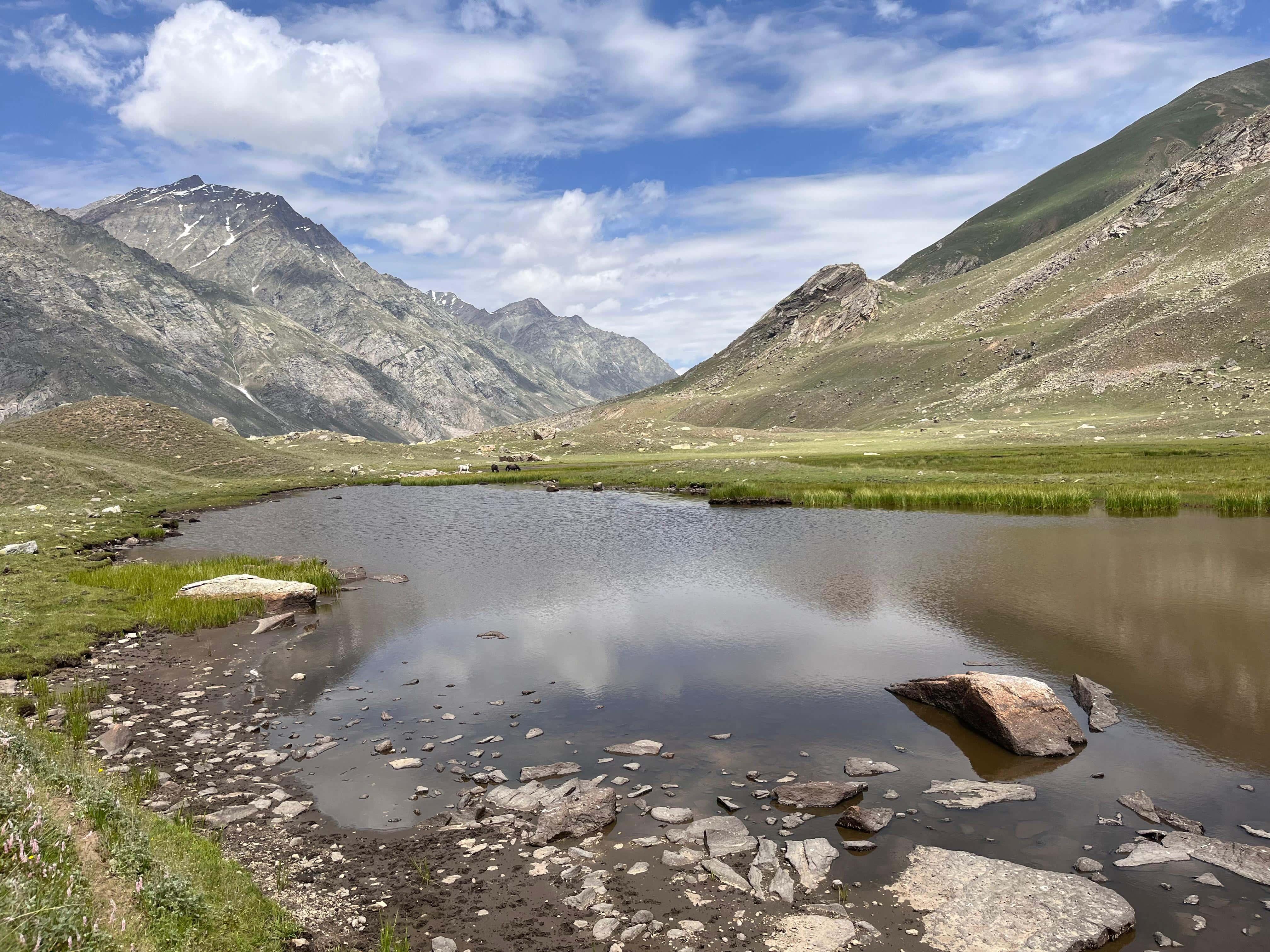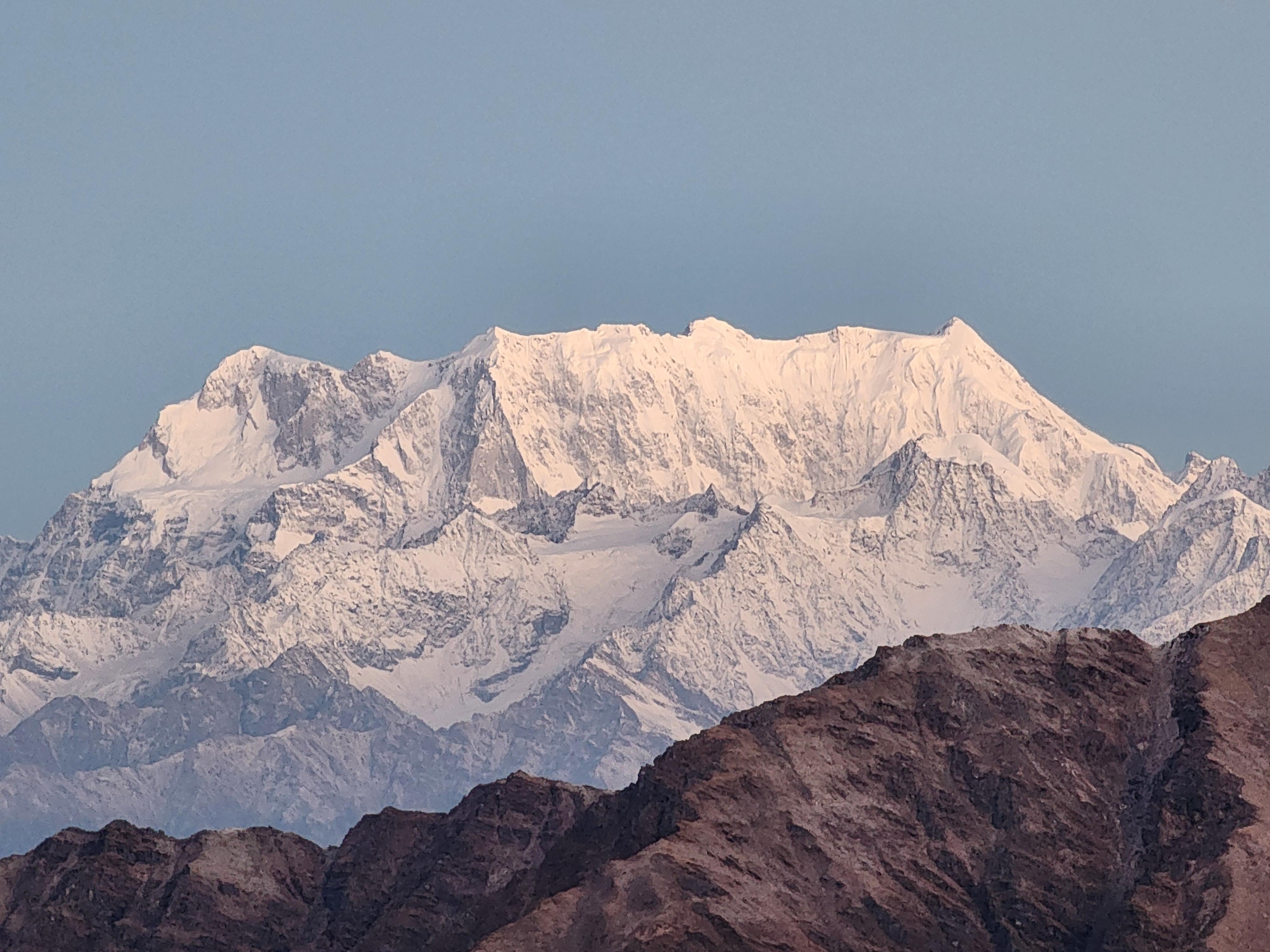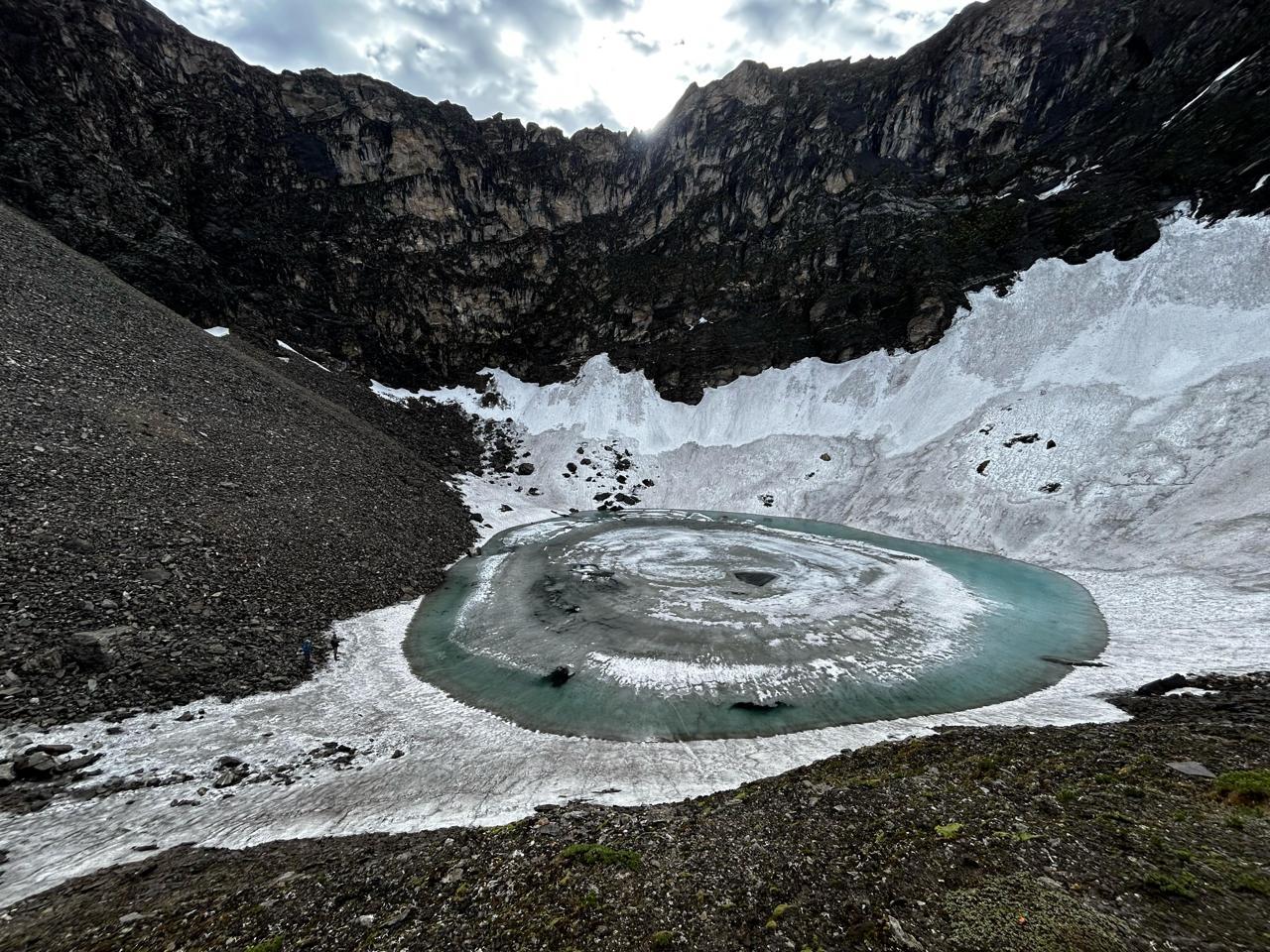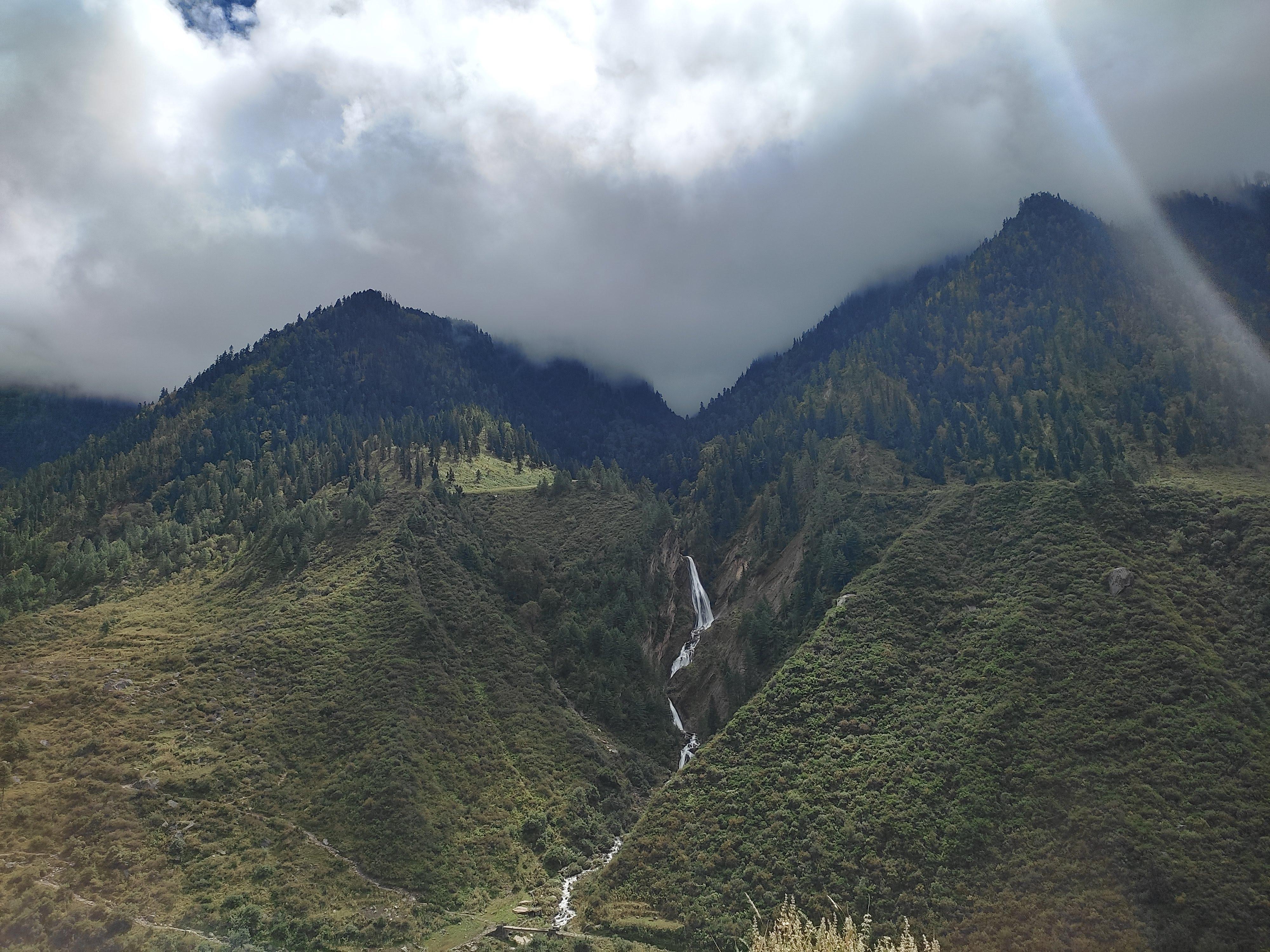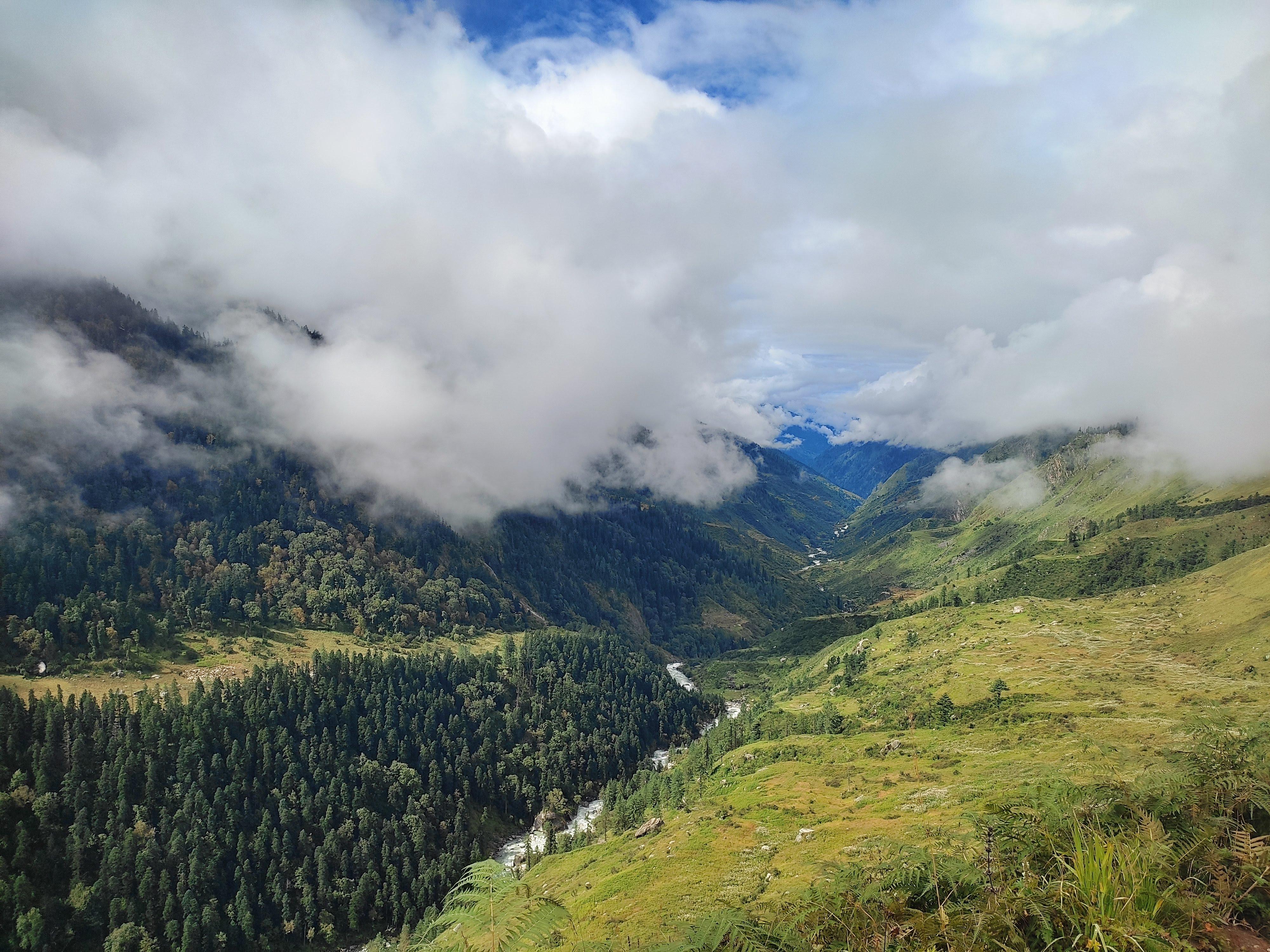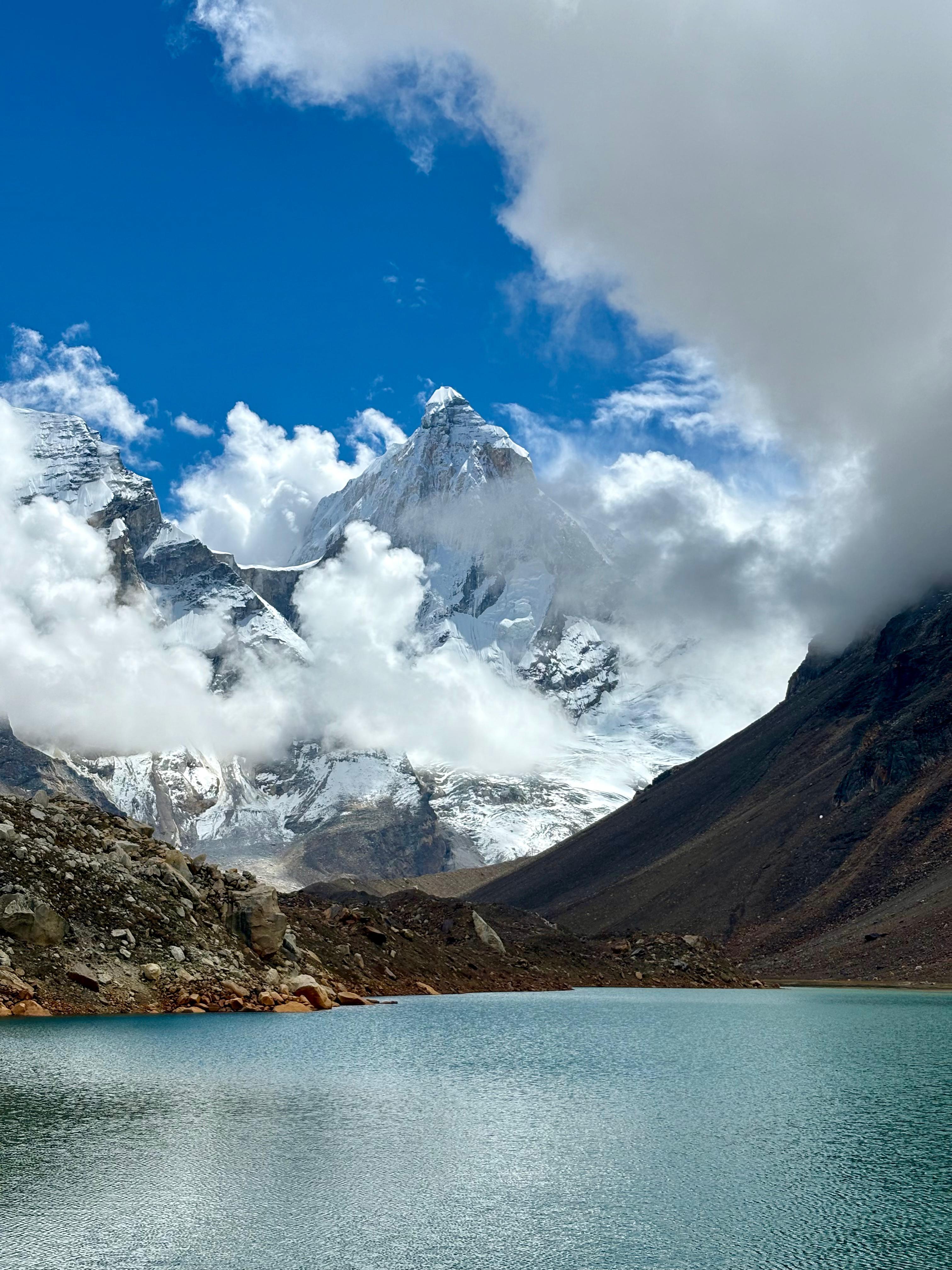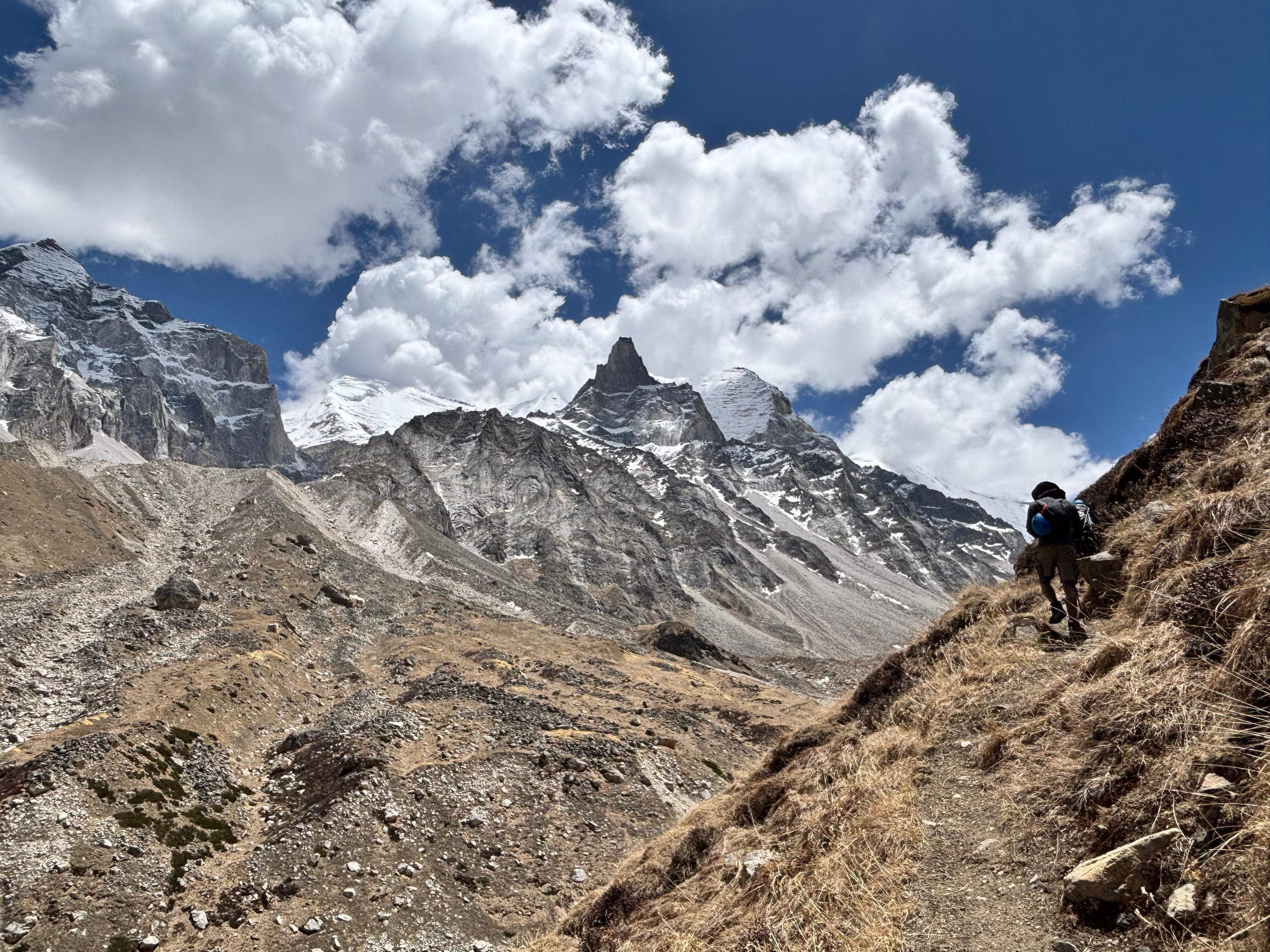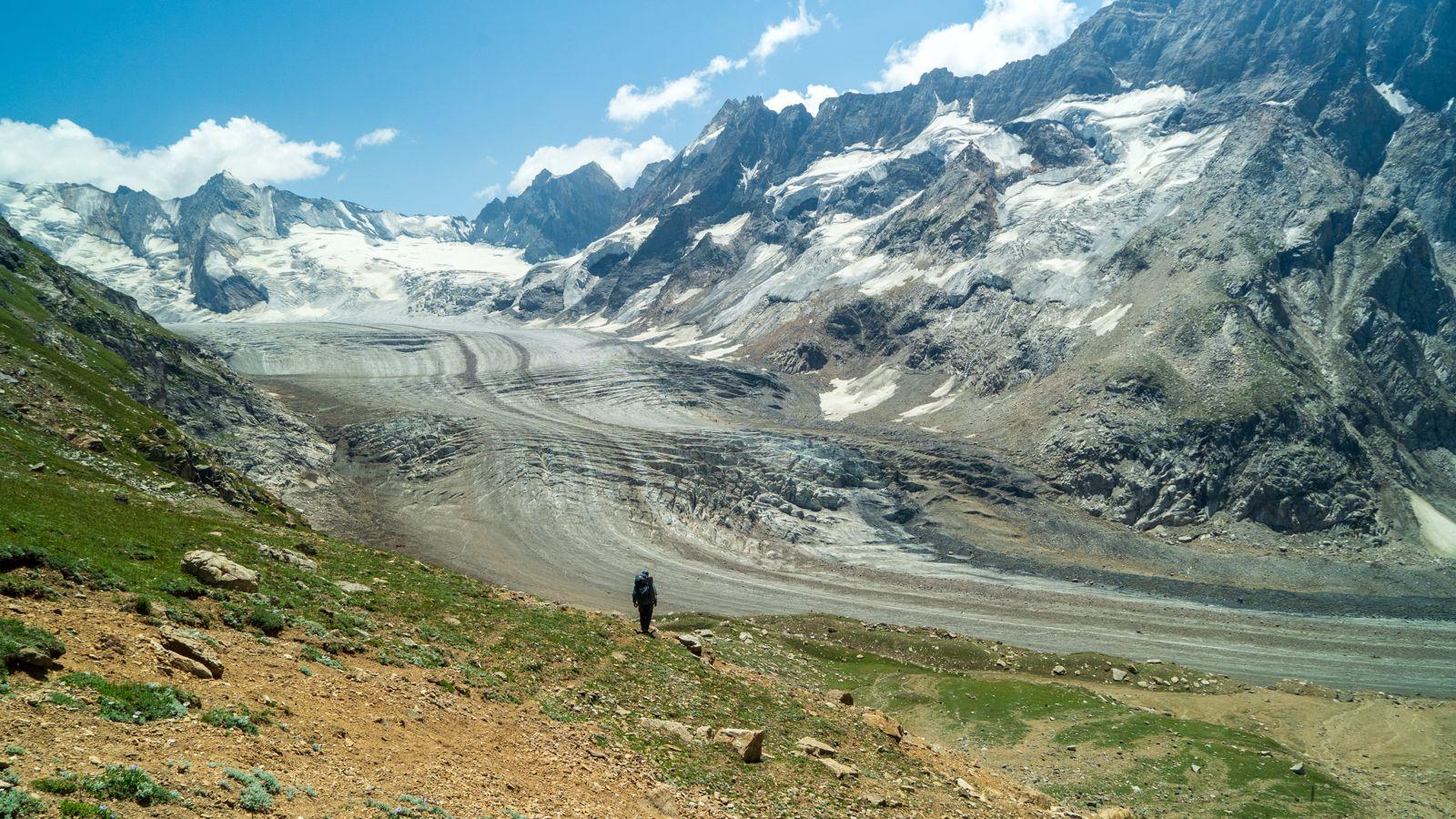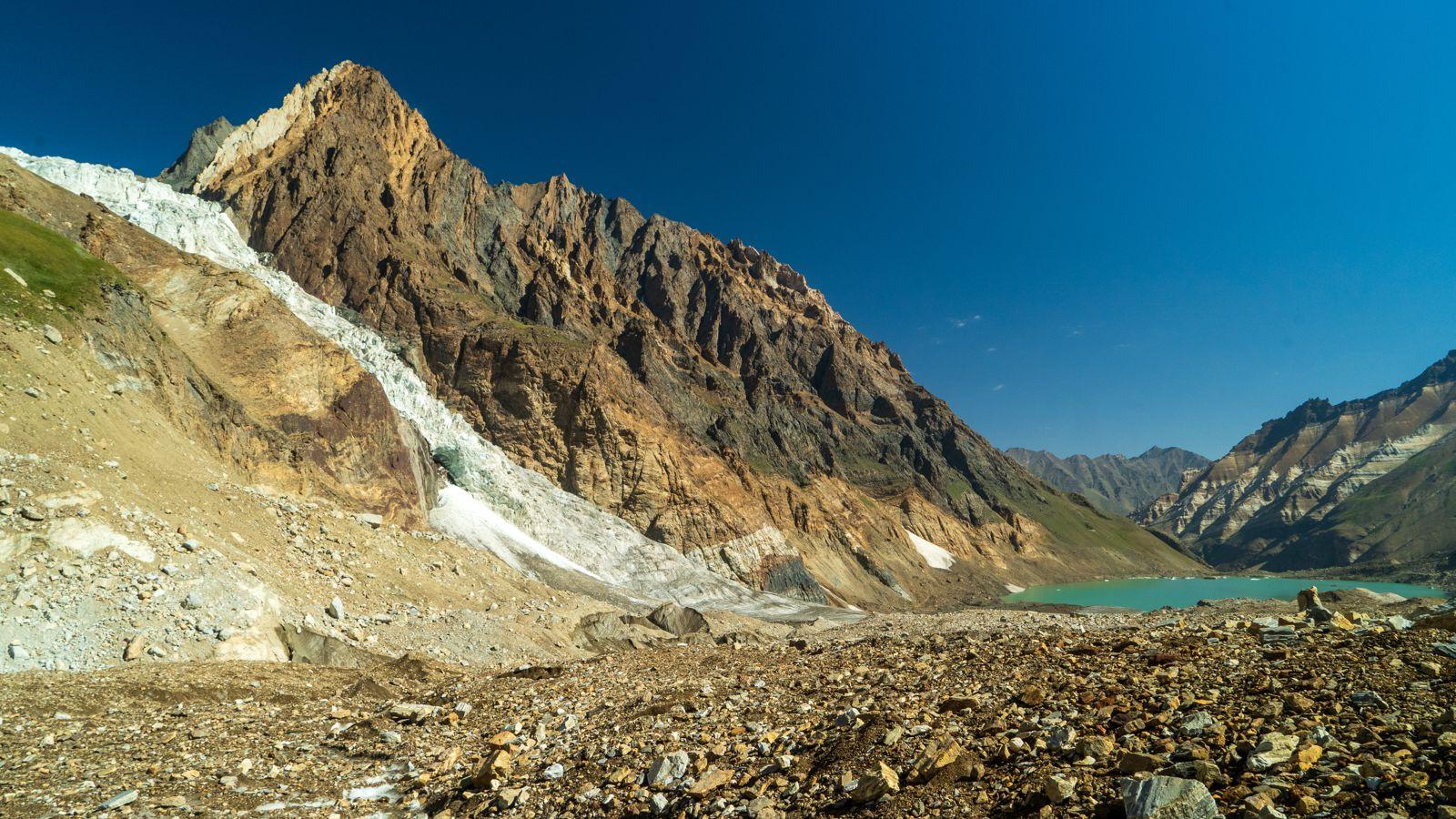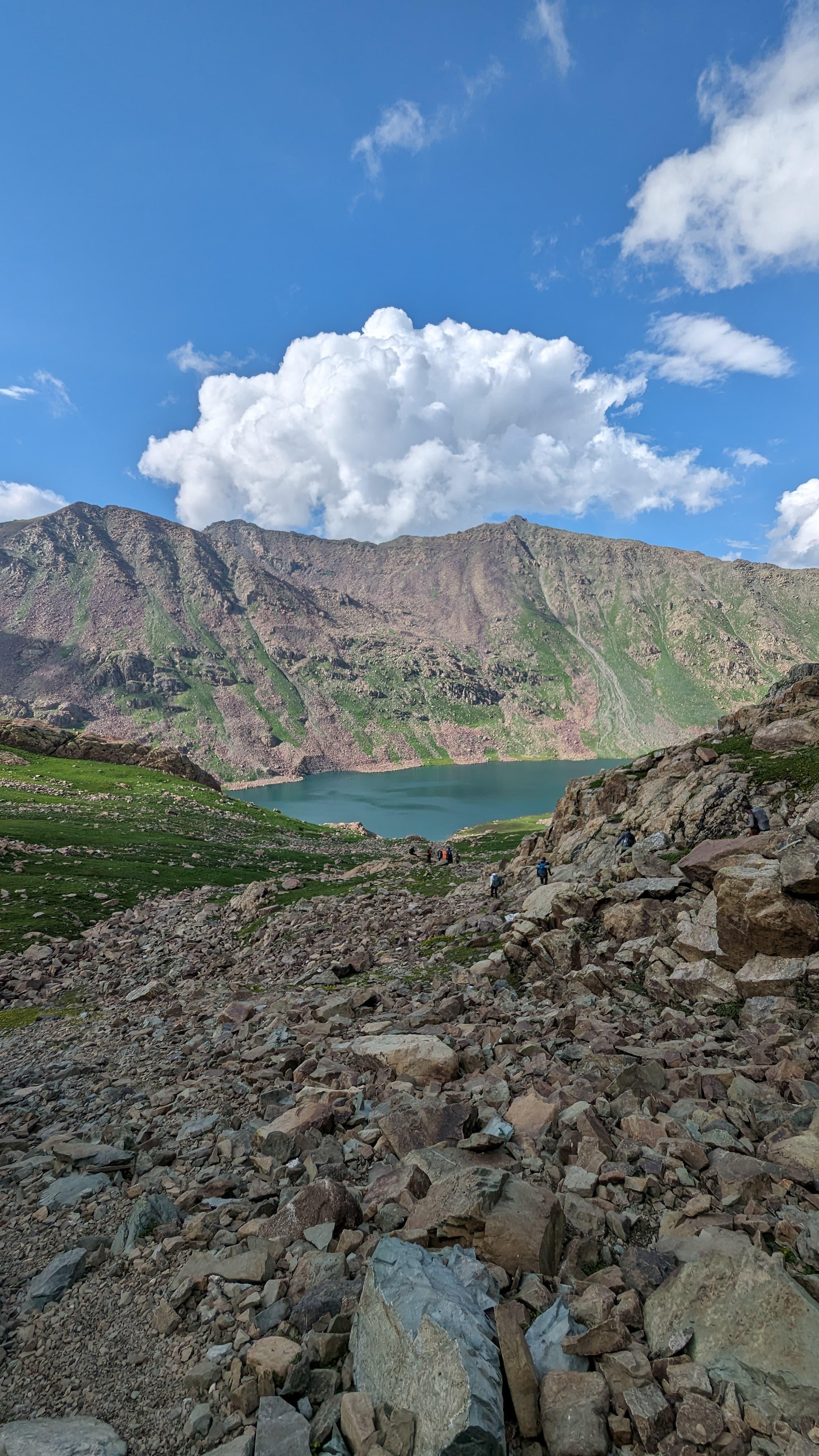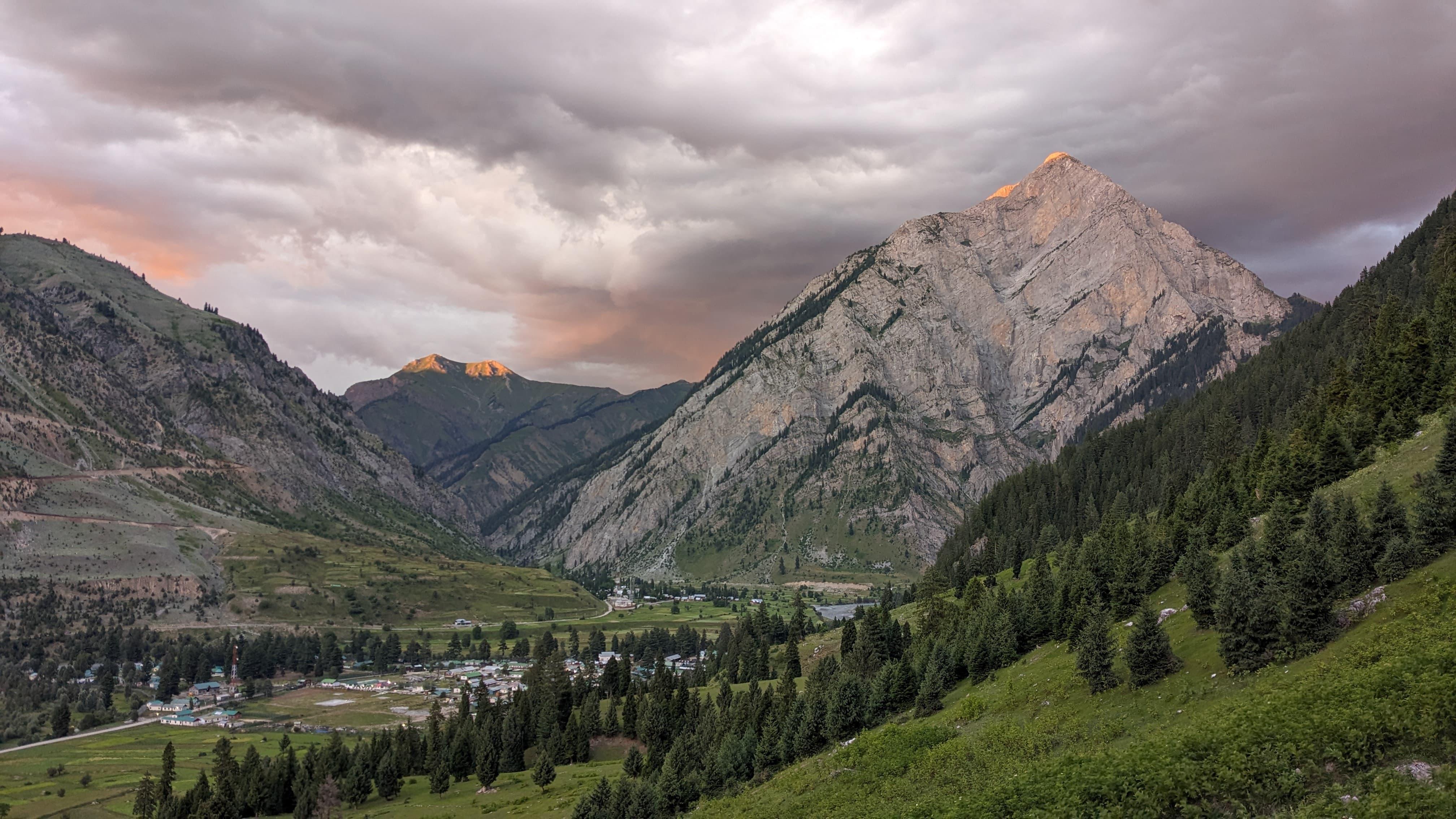Parang La is more than a mountain trail—it’s a living chronicle of ancient Himalayan trade, nomadic culture, and geological spectacle. Historically, this high-altitude pass formed a vital caravan route connecting Spiti’s black barley and high-desert cultures with Ladakh's salt, wool, and Changpa nomads. Starting as early as the 17th century, Tibetan horse caravans known as “Lhagang” traversed this rugged path, carrying goods through shifting glaciers, crevasses, and frozen ridges in summer months.
Geologically, the pass offers a rare chance to walk across lifted Tethyan sedimentary beds—layers of fossils and ancient seabed visible in cliff strata. As you climb, the terrain transitions from Spiti’s flat high-altitude desert to angular moraines, crevassed icefields, and finally the Changthang plateau’s wind-eroded clay pans. Every rock tells a story of millions of years of tectonic upheaval.
Culturally, the trek is a bridge between Tibetan Buddhism and Changpa nomadic traditions. On the Spiti side, you’ll pass chortens and mani walls, with prayer flags flapping in high wind—symbols of blessings and protection. As you cross over, the landscape softens psychologically; the stone-run remains pure, but traces of Changpa life—yak and pashmina goat corrals, yak dung ovens, and Eski-style nomadic tents—emerge.
Relevance today extends well beyond trade. The trek reconnects modern adventurers with the echoes of the past—herders go with their flocks, chanting prayers at every pass; you’ll see petrified shells embedded in limestone, and map your passage through landscapes shaped by ice, wind, and nomads. At Tso Moriri, crystal-blue waters reflect Kanjiok Rumtse and Thukje Kang peaks, as monasteries echo Buddhist chant, and Changpa children in colorful kuma (felt hats) gaze in curiosity.
This trek demands physical endurance—up to 18,300 ft summits, long river crossings, 11–12 hour days—but also offers solitude in the truest sense: no mobile coverage, rarely more than a handful of trekkers on the pass. You walk the same contours as traders, Tibetan horses, and Changpas for centuries. It is a pilgrimage of the earth, of culture, and of individual resolve.
Day 1
Drive from Manali to Kaza
Drive Distance: ~200 km
Time Taken: 10–12 hrs
Elevation Profile: 6,700 ft → 12,000 ft
The journey begins in the lush pine-covered valleys of Manali, winding through the iconic Atal Tunnel, where you leave the greenery behind and enter the stark high-altitude terrain of Lahaul and Spiti. The road traverses past Chandra River, through Gramphu and Batal, and then climbs to Kunzum La (15,000 ft), your first dramatic introduction to the trans-Himalayan desert. As you descend into Spiti, the terrain becomes barren, rocky, and Martian—exposing stratified cliffs, deep canyons, and river-carved terraces. Arrive in Kaza, the heart of Spiti, a windswept town bordered by prayer flags, whitewashed stupas, and fossil-rich ridges. You’re now in a different realm—drier air, harsher sun, and a palpable sense of isolation. This day is vital for acclimatization.
Day 2
Drive from Kaza to Chicham
Drive Distance: ~18 km
Time Taken: ~1 hr
Elevation Profile: 12,000 ft → 14,070 ft
A short yet visually striking drive. En route, visit the ancient Ki Monastery—a 1,000-year-old fortress-like structure that’s a centerpiece of Spiti’s spiritual and architectural heritage. After this, the road narrows dramatically, skirting cliffs before arriving at the world’s highest suspension bridge that connects Kibber and Chicham. Chicham, perched on a high, sun-baked plateau, is the last road-accessible village before the wilderness. Around you: barley fields, yaks grazing on sparse grass, and villagers preparing for winter. Spend the evening walking through stone alleyways, acclimatizing to thinner air and stunning views of the Kanamo Peak ridge line.
Day 3
Chicham to Thaltak Meadows
Trek Distance: 8 km
Time Taken: 5–6 hrs
Elevation Profile: 14,070 ft → 15,400 ft
The trek begins with a brisk ascent along a dusty, exposed trail, weaving around boulder-strewn ridges. The terrain alternates between hard-packed dirt and loose scree, keeping you on alert. There are few signs of greenery—only patches of alpine moss and small wildflowers adapted to extreme altitudes. By midday, you arrive at Thaltak, a high, undulating meadow with surreal views of Spiti’s deep gorges behind you and the snow-laced peaks of Ladakh ahead. The wind is constant, and nights are sharply cold. You’ll feel the shift from civilization into true wilderness tonight as you camp under a vast canopy of stars.
Day 4
Thaltak to Borochin
Trek Distance: 12 km
Time Taken: 7–8 hrs
Elevation Profile: 15,400 ft → 16,400 ft
The day begins with a steep and slippery descent into the Rong Nala gorge—navigating loose shale, scree, and crumbling soil. Trekking poles and steady footing are critical. You cross a wooden bridge at the base, then begin the long, slow ascent along glacial moraines and moraine boulders. There’s no shade, no vegetation—only rock and sky. Borochin is a windswept moraine basin at the foot of Parang La, surrounded by debris left behind by ancient glaciers. The cold bites sharper here, and you start to notice your breath growing heavier with every movement. It's a true expedition campsite—barren, brutal, and beautiful.
Day 5
Borochin to Parang La to Kharsa Yongma
Trek Distance: 14 km
Time Taken: 8–10 hrs
Elevation Profile: 16,400 ft → 18,300 ft → 15,900 ft
Summit day begins before dawn. Headlamps flicker on as you ascend switchbacks carved into the scree. The final push to Parang La (18,300 ft) is a taxing effort, often through ice or snowfields depending on the season. The reward? A majestic panorama of Spiti, Zanskar, and Changthang ranges. From the pass, descend carefully along a glacier, weaving around crevasses, then continue into lateral moraines that eventually flatten near the Pare Chu River. The landscape becomes wider, riverine, and sandy. Kharsa Yongma sits beside the river—a hauntingly isolated location that feels completely removed from time.
Day 6
Kharsa Yongma to Datang Yongma / Kapapuche
Trek Distance: ~20 km
Time Taken: 8–9 hrs
Elevation Profile: 15,900 ft → 15,400 ft
Today’s trek transitions into the vast Changthang landscape. The trail follows the wide floodplains of the Pare Chu River, often braided with multiple shallow streams. Early in the day, you’ll cross icy riverlets using stepping stones or barefoot wading. The terrain is largely flat, but don’t be misled—the sheer distance, loose gravel, and blazing high-altitude sun take their toll. The vastness begins to overwhelm: there’s little shelter, no trees, and endless horizons of rock and wind. Datang Yongma (also called Kapapuche) lies near broad grassland terraces often grazed by nomads’ herds. Distant cliffs glow rust-orange in evening light. The silence is deep and unbroken—no mobile signals, no human interference.
Day 7
Kapapuche to Kitpodansa
Trek Distance: ~20 km
Time Taken: 7–8 hrs
Elevation Profile: 15,400 ft → 14,900 ft
The trail meanders along the river with subtle undulations. Today, you begin noticing signs of life—nomadic markers, occasional cairns, and wide yak trails carved into the earth. Keep an eye out for kiangs (wild asses) sprinting across the flats and golden marmots sunbathing on boulders. As you descend slightly in altitude, oxygen becomes more available, but the strong sun and dry air still demand hydration and pacing. Kitpodansa is marked by a widening in the valley, and your campsite rests on a gently sloped terrace beside the Pare Chu. Expect a colder night—this part of the plateau is exposed to evening winds.
Day 8
Kitpodansa to Chumik Shilde
Trek Distance: ~18–19 km
Time Taken: 7–8 hrs
Elevation Profile: 14,900 ft → 15,550 ft
Start the day early to cross the Pare Chu—this is a wide, braided section and may require multiple crossings. Water levels rise quickly post-noon. Once across, a long ascent follows over sunburnt hills. The trail becomes less defined, marked only by yak droppings and hoof prints. Wild alpine herbs like edelweiss, thyme, and dandelion start appearing. You’re now stepping into the ecological fringe of the Tso Moriri region. As you gain elevation, the landscape opens into rolling pastures with distant glimpses of the lake’s icy shimmer. Camp at Chumik Shilde, a cold high pasture favored by kiangs, pikas, and migrating geese. Tents are often buffeted by winds through the night.
Day 9
Chumik Shilde to Kiangdom (Tso Moriri)
Trek Distance: ~14 km
Time Taken: 6–7 hrs
Elevation Profile: 15,550 ft → 15,000 ft
This day is spiritually enriching and visually grand. The trail gently undulates over high pastures and finally crests a ridge to reveal the breathtaking Tso Moriri—a 26 km long, high-altitude lake shimmering with shades of turquoise, cobalt, and silver. The descent to Kiangdom—a seasonal nomadic camp—is filled with awe. Marmots whistle across the hillsides, kiangs gallop in groups, and ruddy shelducks splash in alpine ponds. Kiangdom lies at the southern tip of the lake, with fluttering prayer flags and dry corrals. The campsite is surrounded by raw beauty: snow-capped peaks, grazing herds, and a glassy lake that mirrors the sky.
Day 10
Kiangdom to Karzok
Trek Distance: ~21.5 km
Time Taken: 7–8 hrs
Elevation Profile: 15,000 ft → 15,100 ft
Our final day is a long lakeside walk—relatively flat but mentally challenging due to the distance and exposure. The western edge of Tso Moriri is gravelly, with intermittent meadows and glacial melt streams. Throughout the day, the monastery village of Karzok grows slowly on the horizon. As you walk, you’ll see semi-nomadic Changpa herders, their yaks and pashmina goats silhouetted against the vast lake. By the time you reach Karzok—an oasis of human life with stupas, prayer wheels, and homestays—you’ll feel like you’ve completed a spiritual migration. The monastery’s evening chants mark your return to civilization.
Day 11
Karzok to Leh
We start our drive of 240 Kms from Karzok to Leh in the morning.
Day 12
Buffer Day
An additional day is kept in reserve as buffer day in case the weather does not permit going ahead or if we use an additional day as rest day during the trek.
Trekking Experience
The Parang La trek is a high-altitude, cross-glacier, multi-day expedition and not recommended for first-time trekkers. Participants should have prior experience of at least one high-altitude trek above 14,000 ft (e.g. Hampta Pass, Buran Ghati, Goechala, or Pin Bhaba). Familiarity with long trekking days (6–10 hours) and basic camp life is essential.
Acclimatization Preparedness
You will be sleeping above 14,000 ft from Day 2 itself, with gradual climbs to 16,000 ft and a pass crossing at 18,300 ft. The route has no quick exit options. Therefore, participants must spend at least 2–3 days at high altitude (Kaza/Chicham) before starting the trek to allow proper acclimatization.
Mental Endurance
Parang La tests your patience and composure. The terrain is often repetitive, weather can be unpredictable (especially wind), and solitude is intense. There are no forests, no villages, and no network. You must be comfortable with silence, harsh sunlight, and long days of exposure.
Minimum Fitness Required
Stamina: Must be able to jog or hike 5 km in under 35 minutes with ease.
Endurance: Capable of trekking 15–20 km/day for multiple days with a 10–14 kg backpack.
Strength: Strong lower body and core strength to handle glacier crossings, long moraines, and steep scree ascents/descents.
Cardiovascular Health: No history of high-altitude sickness, uncontrolled asthma, or cardiac conditions. Should be able to maintain 140+ bpm during continuous activity.
Adaptability: Able to sleep in sub-zero temperatures in tents, cook and eat minimal meals, and perform self-care in wilderness conditions
Our Expectations from the Participants
- Carry your own backpack.
- Cooperate in campsite duties when necessary (pitching tents, fetching water, cooking meals, etc.).
- Be mindful with timings, hydration, and self-care.
- Respect local customs and wildlife. Do not litter or disturb natural settings - we follow a strict Leave No Trace Code.
- Be transparent with your physical condition; inform the Program Instructors early in case of any discomfort or symptoms of AMS (Acute Mountain Sickness).
Inclusion
Exclusion
SELECT DATE TO REGISTER
Thank You!
Your form has been submitted successfully. We'll get back to you soon.
₹28,599 + 5% GST
